Physical Address
304 North Cardinal St.
Dorchester Center, MA 02124
Physical Address
304 North Cardinal St.
Dorchester Center, MA 02124
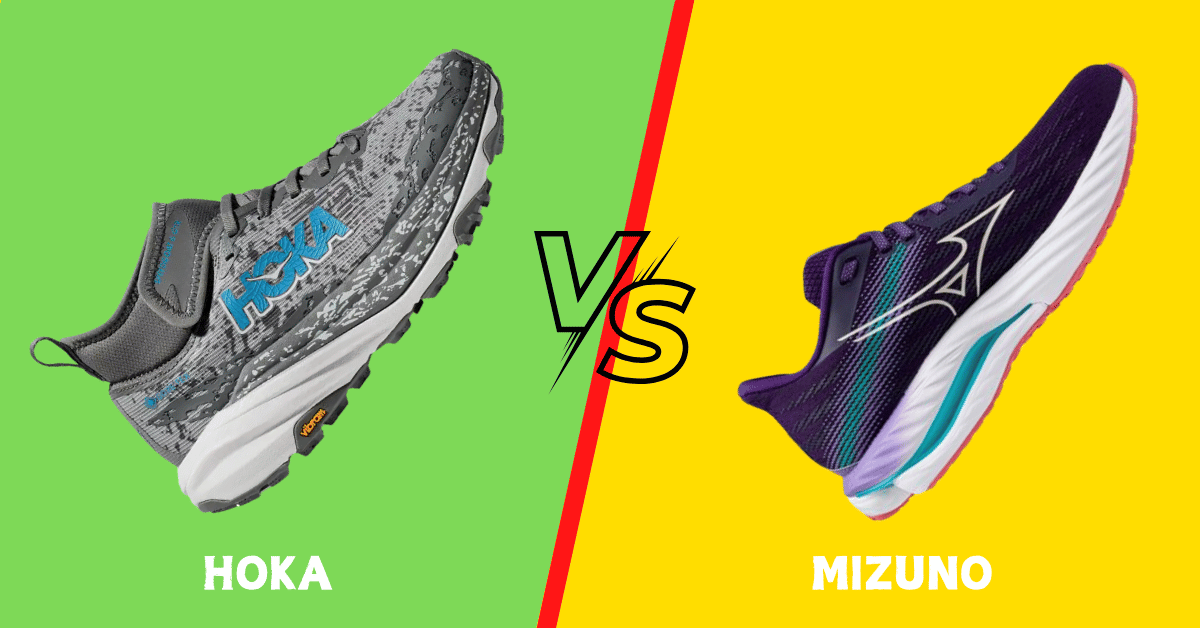
When it comes to running shoes, the choice can be overwhelming. Two popular brands that stand out are Hoka vs Mizuno. Both brands Hoka vs Mizuno have loyal followers and distinct features that cater to different runners. In this article, we’ll break down the key aspects of each brand, including comfort, style, sizing, durability, and more. By the end, you’ll clearly understand which brand suits your needs.
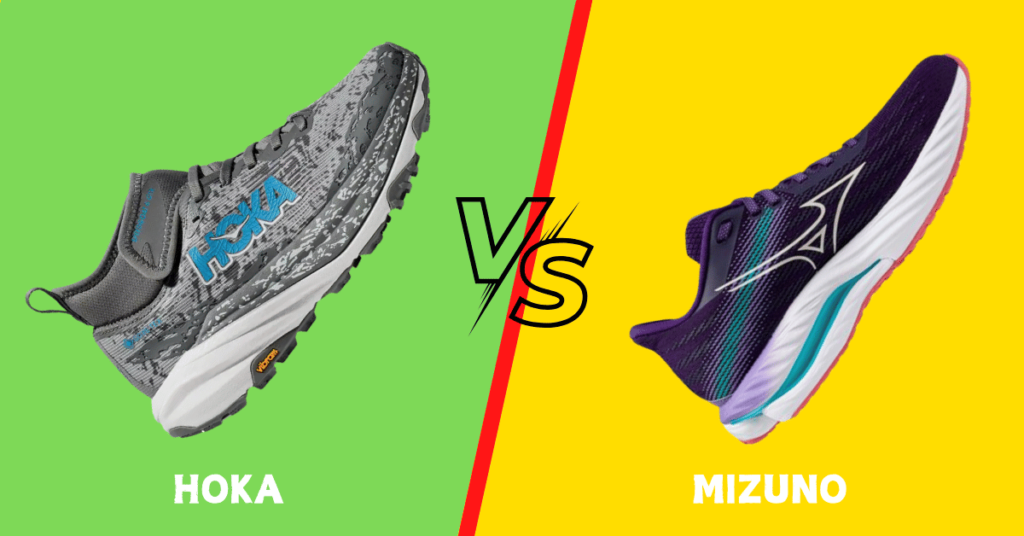
| Feature | Hoka Transport | Hoka Clifton 9 |
| Comfort | Highly cushioned, soft, and plush feel | Comfortable with a responsive feel; slightly firmer than Transport |
| Style | Casual, everyday look | Sleeker, more athletic aesthetic, often preferred for running |
| Durability | Good durability, but is designed more for casual wear | Excellent durability, built for frequent running and training |
| Breathability | Breathable mesh upper, but less ventilated than Clifton | Engineered mesh upper with excellent ventilation |
| Fit | Roomier, more relaxed fit | Snug fit, but still provides ample room in the toe box |
| Pricing | Generally more affordable, priced lower than Clifton 9 | Higher price point, premium due to performance and technology |
| Customer Reviews | Generally positive for comfort and casual use; some mention a bulkier feel | Very popular for its comfort and lightness; highly rated by runners for daily use |
When comparing Hoka vs Mizuno, comfort is a defining factor. Hoka offers plush cushioning with its signature oversized midsoles, making it perfect for long runs and recovery. Mizuno, on the other hand, provides responsive cushioning through its innovative Wave Plate technology, which is ideal for runners seeking a firmer, performance-driven feel. Both brands excel in unique ways, catering to diverse running preferences and needs.
Hoka is renowned for its plush cushioning. Its signature oversized midsoles provide exceptional shock absorption, making it a favorite for long-distance runners and those recovering from injuries. The Meta-Rocker technology promotes a smooth heel-to-toe transition, reducing fatigue.
Mizuno shoes, on the other hand, focus on responsive cushioning. Their Wave Plate technology distributes impact evenly, ensuring a springy feel with each step. Mizuno excels in balancing cushioning with a firmer, more supportive ride, appealing to runners who prefer a faster, more connected feel.
| Feature | Hoka | Mizuno |
|---|---|---|
| Cushioning | Plush, soft | Responsive, firm |
| Best for | Long distances, recovery | Speed, performance |
| Unique Technology | Meta-Rocker | Wave Plate |
Style and design play a crucial role when choosing between Hoka vs Mizuno, as they reflect both performance and personal preference.
Hoka shoes are known for their bold and chunky designs. Their thick soles make a statement, and while they may not be for everyone, many runners appreciate their distinctive look. Hoka offers a variety of colorways, from bright and eye-catching to neutral and subdued.
Mizuno takes a sleeker and more traditional approach to design. Their shoes often have a sporty and minimalist aesthetic, appealing to runners who prefer a classic look. Mizuno focuses more on performance-driven designs than making a fashion statement.
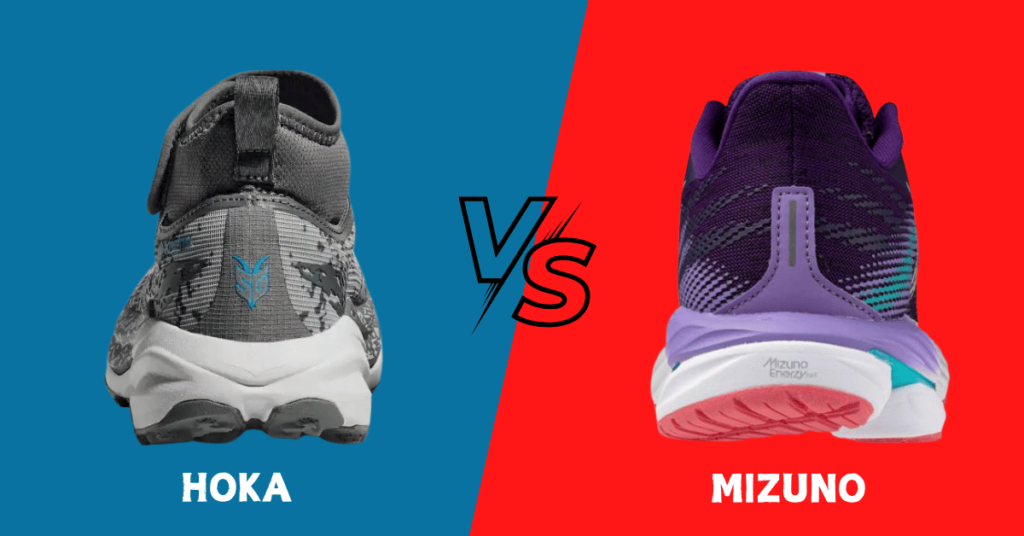
| Aspect | Hoka | Mizuno |
|---|---|---|
| Focus | Cushioning and comfort | Responsiveness and speed |
| Design Style | Chunky, bold | Sleek, traditional |
| Technology | Meta-Rocker | Wave Plate |
| Ideal User | Endurance runners, beginners | Competitive runners, sprinters |
Sizing consistency is key to finding the perfect fit, and both Hoka vs Mizuno strive to deliver reliable options for runners of all foot shapes.
Hoka shoes generally fit true to size, though some models may run slightly narrow in the toe box. It’s advisable to try them on or refer to the brand’s sizing chart.
Mizuno is praised for its consistent sizing. Most runners find their regular size works perfectly, and the fit across models tends to remain uniform.
When it comes to brand reputation, Hoka vs Mizuno stands out as a trusted name in the running world, and it is known for its innovation, quality, and loyal following.
Hoka has quickly gained popularity since its launch in 2009. Known for innovation and catering to various running needs, it’s particularly favored among marathoners and trail runners.
Mizuno, a Japanese brand, has been around for over a century. Its reputation for producing high-quality, performance-focused gear makes it a trusted choice for athletes worldwide.
Breathability is a game-changer for runners, and both Hoka vs Mizuno deliver innovative designs to keep your feet cool and comfortable during every stride.
Hoka employs engineered mesh uppers that offer decent breathability. However, the thicker midsoles can trap some heat, making them slightly less breathable in hot weather.
Mizuno excels in breathability with its lightweight mesh materials. Their shoes are ideal for runners in warm climates, providing better airflow to keep feet cool.
Durability is a must-have feature for running shoes, and both Hoka vs Mizuno are built to withstand the test of time, offering exceptional longevity for runners who demand reliability.
Hoka shoes are built for long-distance durability, thanks to their robust midsoles. However, the softer cushioning can wear down faster under heavy use.
Mizuno shoes are celebrated for their long-lasting materials. The Wave Plate adds structural integrity, ensuring the boots hold up well over time.
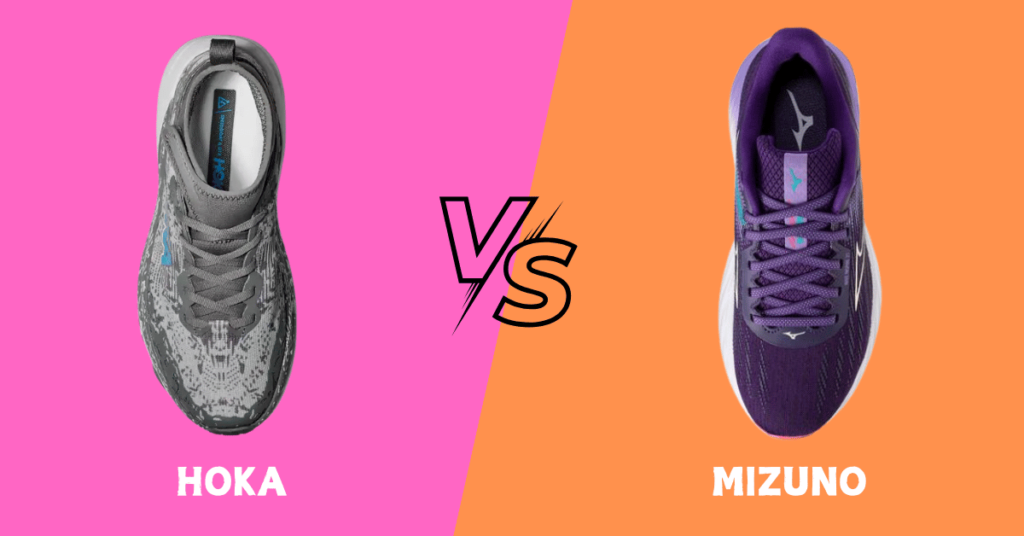
Fit and support are critical for peak performance, and both Hoka vs Mizuno excel in providing innovative designs that ensure stability, comfort, and confidence with every step.
Hoka prioritizes cushioned support, which benefits runners with joint issues or those who overpronate. The wide base provides extra stability.
Mizuno offers a snug, locked-in fit, making it a great option for those who value precision and responsiveness. The Wave Plate enhances lateral support.
Hoka vs Mizuno shoes are priced in a similar range, typically between $130 and $180. Hoka often leans slightly higher due to its advanced cushioning technology, while Mizuno provides excellent value for its durability and performance.
Customer reviews reveal the true performance of running shoes, and both Hoka vs Mizuno consistently receive high praise for their unmatched comfort, durability, and innovative technology.
Customers praise Hoka for its comfort and injury prevention. However, some find the thick soles clunky and less suitable for fast-paced running.
Mizuno receives high marks for its responsive feel and durability. Competitive runners often appreciate the brand’s focus on performance, though beginners may find the firmer cushioning less forgiving.
When comparing Hoka vs Mizuno, each brand brings unique strengths and some drawbacks. Here’s a breakdown to help you decide:
Choose Hoka for comfort and support; opt for Mizuno for speed and durability.
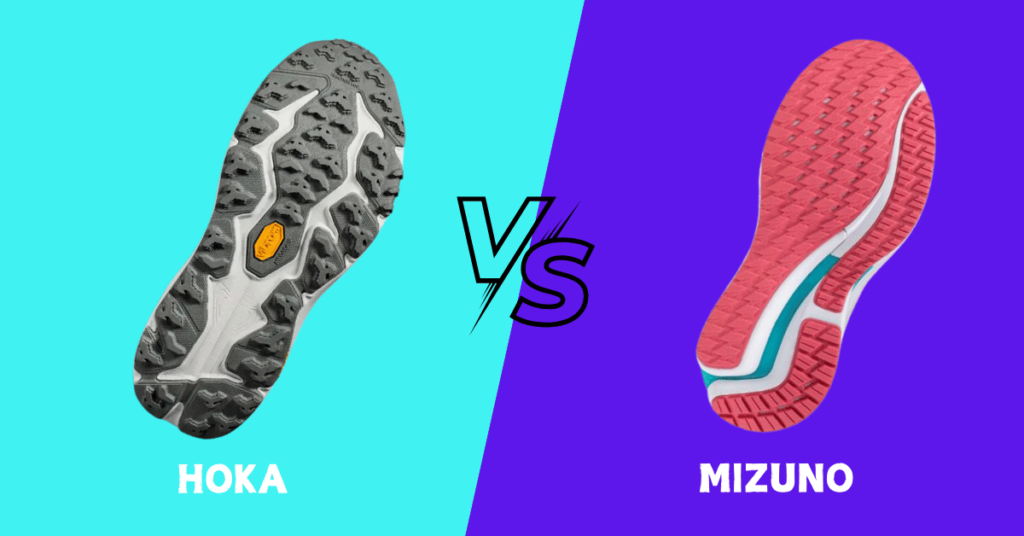
Choosing between Hoka vs Mizuno depends on your specific needs:
If I had to choose a brand that’s closest to the fit, feel, and look of hokas it would be Brooks. These Adrenaline GTS 22 sneakers are known for their exceptional cushioning and responsive ride, making them an excellent choice for runners who prioritize comfort and support during long-distance training.
Durability: Mizuno shoes are known for their durability, making them a good investment for regular runners. The materials used are often high-quality, which contributes to their longevity.
Cushioning: Hoka shoes are known for their thick, plush cushioning, which helps absorb impact and reduce stress on the feet and joints. This is particularly beneficial for individuals with conditions like plantar fasciitis, arthritis, or those recovering from injuries.
Today, Mizuno is a global corporation that makes a wide variety of sports equipment and sportswear for table tennis, boxing, badminton, golf, baseball, mixed martial arts, association football, gridiron football, futsal, judo, rugby, running, skiing, athletics, swimming, tennis, handball, and volleyball.
In recent years, Mizuno has looked to expand into the world of football, sponsoring teams such as Lazio, FC Augsburg, VfL Bochum, Portimonense SC, and players like Sergio Ramos, Tijjani Reijnders, and Oriol Romeu internationally.